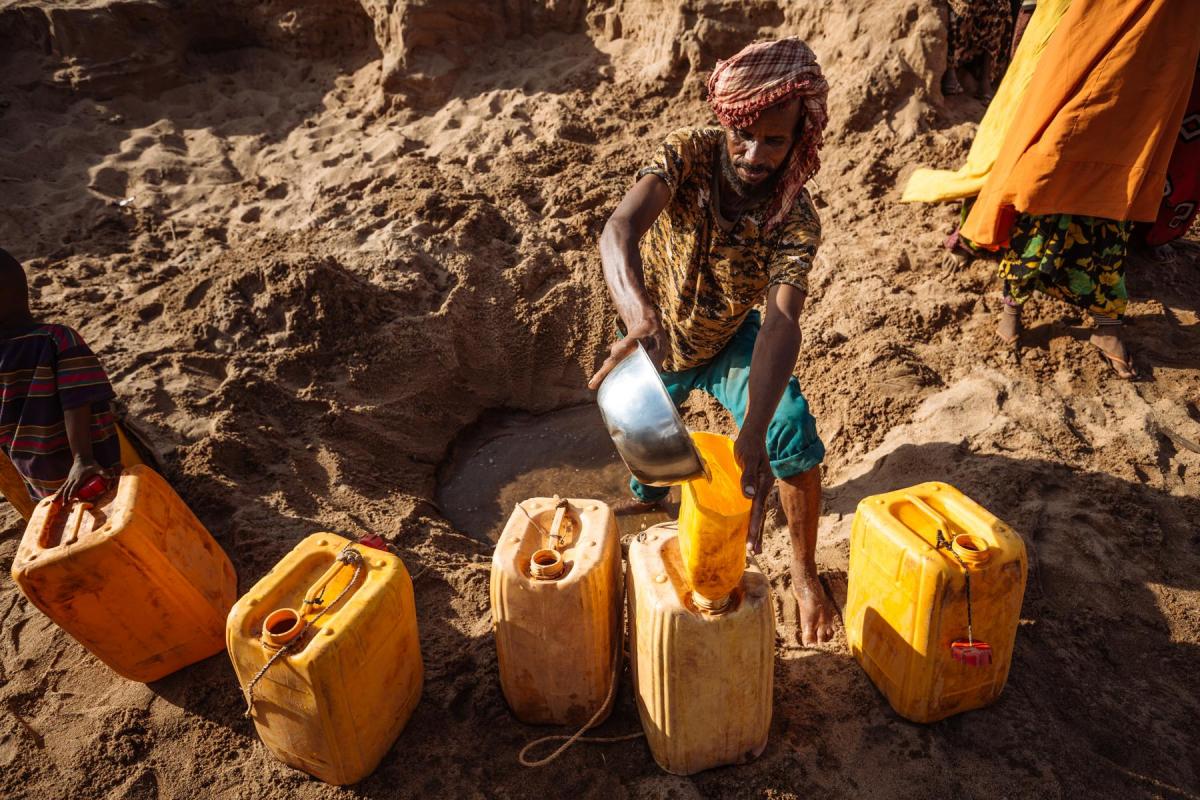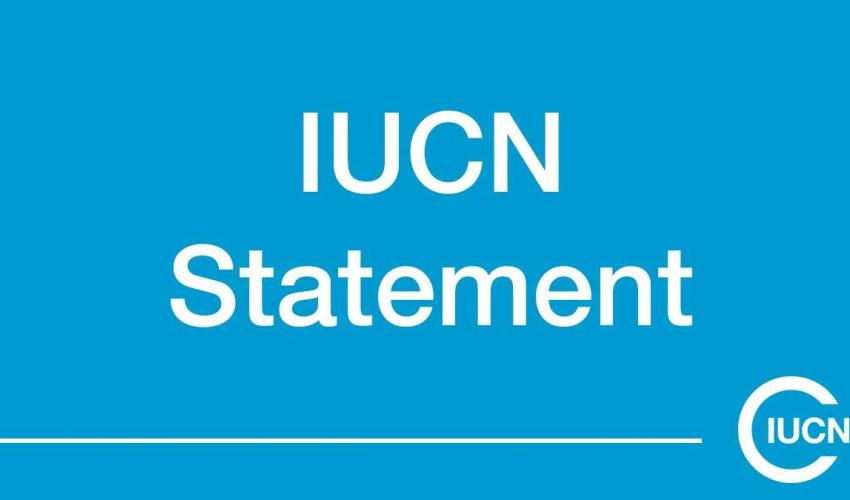IUCN Acting Director General’s Statement on International Migrants Day
When it is a deliberate choice, migration can be a powerful source of new opportunities. Yet for many people, migration is not a choice. Many are forced to leave their homes, fearing conflict and violence, or fleeing from persecution and human rights violations. For 2019, the UN has estimated the total number of migrants globally at 272 million – 23% higher than in 2010. According to UNHCR, the global population of forcibly displaced people stood at around 70.8 million in 2018, and is now at its highest recorded level.

After a drought in 2017 related to an El Niño event, food and water resources became scarce in parts of Somalia, affecting millions.
Photo: Muse Mohammed/IOM
Environmental change and natural hazards have recently become a major factor causing people to migrate. Natural resources seldom – if ever – constitute the sole cause of migration, but the two are frequently connected. One important link involves conflicts related to the availability of natural resources driving displacement.
Competition over natural resources can trigger conflicts. According to UNEP, some 40% of all civil wars since 1950 were associated with natural resources, and since 1990, natural resources have played a role in at least 18 violent conflicts. Poor governance, scarcity and unequal distribution of natural resources, alongside extreme environmental events and land degradation, are also intimately linked to migration, often leading to internal displacement.
When natural resources are degraded as a result of unsustainable use, extreme weather or environmental catastrophes, their capacity to provide people with food, wood and income diminishes. And when natural resources no longer support local livelihoods, it comes as no surprise that people look for the chance of a better life elsewhere. Unquestionably, climate change will aggravate this tendency in the coming years, and will give rise to increasing numbers of ‘environmental migrants’.
Regrettably, we have also seen that humans displaced by conflict may end up suffering as a result of changes to the natural environment. A recent example involves the Rohingya from Myanmar, after 735,000 refugees took up camp in bordering Bangladesh between August and December 2017. The settlements hurriedly set up in response to this overwhelming influx of people inadvertently blocked the only vital elephant migration corridor between Bangladesh and Myanmar. Many of Bangladesh’s Endangered Asian elephants were accustomed to using these routes every year. Tragically, in less than half a year, thirteen Rohingya lives were lost in the resulting encounters with elephants.
Equipped with elephant expertise and a strong local presence, IUCN was called in to work with UNHCR to try to achieve a peaceful coexistence between elephants and refugees. The results are encouraging: there have been no further fatalities after people were taught how to cope with elephant encounters, 99 watchtowers set up around the camps, 606 volunteers (582 of whom are refugees) organised into 50 elephant response teams, and elephants prevented from entering the camps 118 times to date.
The links between natural resources, environmental conditions, conflict, and migration are indisputable. Extreme environmental events, such as storms or floods, tend to increase the risk of migration. A key challenge is to understand how natural resources, when well managed and governed, could pave the way towards peace and security. While better management and conservation of natural resources alone will not resolve problems related to conflict and migration, they deserve serious consideration as migration and climate change projections continue to rise.
Today, on International Migrants Day, IUCN calls for greater peace-building efforts across the world, alongside recognition that sustainable land use, biodiversity conservation and climate change adaptation can reduce the chances of migration becoming an obligation, rather than a choice. If we are to achieve a just world that values and conserves nature, we must first understand the need to develop in harmony with our environment.



